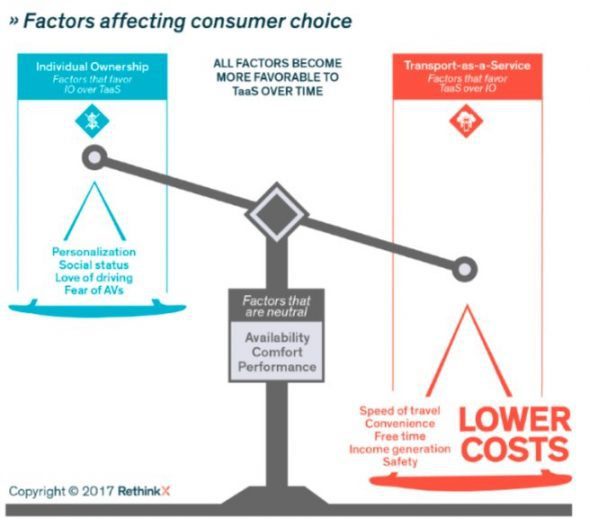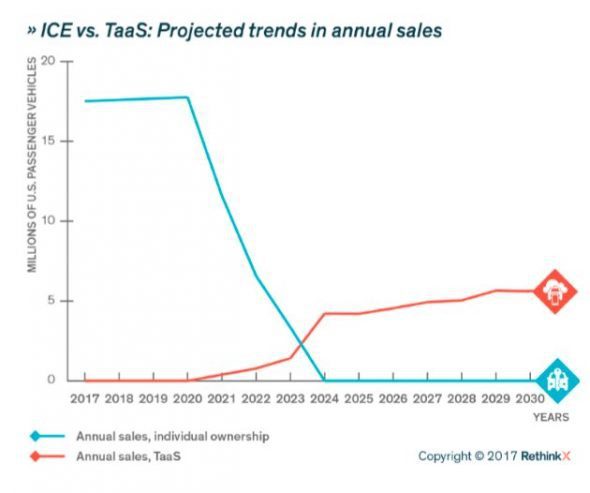Futures Forum: The future of transport > 'intelligent mobility'
Because there are plenty of 'disruptive' models of going about our business out there:
Futures Forum: The Sharing Economy @ BBC Radio 4's Costing the Earth
Futures Forum: Disruptive innovation everywhere...
And the future of cars is not necessarily with Uber:
Futures Forum: A 'defining moment' for the gig/sharing economy as Uber faces a ban in London
Futures Forum: Ride-sharing with BlaBlaCar
There are some particularly interesting ideas coming to the fore about 'ownership':
Futures Forum: The sharing economy >>> "What's yours is mine"
Futures Forum: The future of work: "Capitalism will abolish laundry day" >>> or: "Fully Automated Luxury Communism"
Futures Forum: Transitioning from a Consumer Culture >>> to Sustainable Consumption >>>
Futures Forum: The antidote to Stuffocation: "Sharing, lending, bartering, swapping and gifting networks can all play a part and creating things can be done collaboratively."
Futures Forum: The Story of Stuff: "You cannot run a linear system on a finite planet indefinitely"
We're in a pretty desperate situation now and need a way out:
Futures Forum: A quarter of commuters in the West Country have no access to public transport
Very soon, though, we will not be needing to 'own the car we drive'.
Here's a recent view from Australia:
Death spiral for cars. By 2030, you probably won’t own one
By Giles Parkinson on 9 May 2017
By 2030, you probably won’t own a car, but you may get a free trip with your morning coffee. Transport-As-A-Service will use only electric vehicles and will upend two trillion-dollar industries. It’s the death spiral for cars.
A major new report predicts that by 2030, the overwhelming majority of consumers will no longer own a car – instead they will use on-demand electric autonomous vehicles. By 2030, within 10 years of regulatory approval of autonomous electric vehicles (A-EVs), the report says, 95 per cent of all US passenger miles traveled will be served by on-demand, autonomous, electric vehicles that will be owned by fleets rather than individuals.
The provision of this service may come virtually free as part of another offering, or a corporate sponsorship. Imagine, for instance, paying a token sum for a ride into town after buying a latte for $4.50. Or getting a free ride because the local government has decided to make transport easier.

The report, by RethinkX, an independent think tank that focuses on technology-driven disruption and its implications across society, says this stunning and radical will be driven entirely by economics, and will overcome the current desire for individual car ownership, starting first in the big cities and then spreading to the suburbs and regional areas.
This disruption will have enormous implications across the transportation and oil industries, decimating entire portions of their value chains, causing oil demand and prices to plummet, and destroying trillions of dollars in investor value, not to mention the value of used cars. At the same time it will create trillions of dollars in new business opportunities, consumer surplus and GDP growth.
Lead consultant and co-author Tony Seba, who specialises in disruptive technologies. His early forecasts for the enormous uptake of solar where considered crazy, but were proved right, and he has since said that new technologies will make coal, oil and gas all but redundant by 2030). He says while the report focuses on the US, the forecasts are valid for Australia too, because the transportation industry is global. And he warns that the car you buy now may well be your last.
“This is a global technology disruption. So yes, this applies to Australia,” Seba tells RenewEconomy. “And this is going to happen despite governments, not because of governments. Furthermore, the disruption will start in cities with high population density and high real estate prices – think Sydney and Melbourne then Perth, Brisbane and Adelaide – and quickly radiate out to the suburbs, the smaller cities, and then rural areas.”
Indeed, there are some people who are starting to anticipate this change, considering Australian-based business models and even local manufacturing, such as those revealed on Monday by Michael Molitor, the head of a new company called A2EmCo. Seba does not say that individual car ownership will completely disappear. By 2030, 40 per cent of cars will still be privately owned, but they will only account for 5 per cent of kilometres traveled.
Autonomous cars will be used 10 times more than internal combustion vehicles were, they will last longer – maybe one million miles (1.6 million km) – and the savings will inject an additional $1US trillion into the pockets of Americans by 2030.
Seba admits that his forecasts are hard to digest. But what he sees in the transition to autonomous EVs from privately owned petrol cars is the same he has seen for all other major transitions: what he calls the 10x opportunity cost. It happened with the printing press, it happened with the first Model T – it cost the same as a carriage and two horses, but offered 10x the horsepower.
“Every time we have had a ten x change in technology, we had a disruption. This is going to be no different.”
And that change, he says, will happen on day one of level 5 autonomous EVs obtaining regulatory approval. “Basically, the day that autonomous vehicles are regulatory accepted, transport-as-a-service will be 10 cheaper than cost of new vehicles,” he says. And four times cheaper than the cost of already owned vehicles.
Why is this? Because everything will be cheaper.
Like his predictions on the rise of solar, and the sudden decline of fossil fuels, Seba’s calculations are driven by simple economics. Within few years, the upfront costs of AEVs will match those of petrol cars. But the depreciation costs will be minimal, because the cars, owned by fleets, will “last a lifetime”. Maintenance costs will be significantly lower – thanks to 20 moving parts in the powertrain compared to 2,000 for petrol cars – and the miles travelled significantly higher; they will be doing 1.6 million km by 2030, more than five times more than petrol cars.

Moreover, battery technology will improve, needing to be replaced only once, and old batteries will be able to used elsewhere (in the power grid). The cost of maintenance will be one-fifth the cost of current cars, the cost of finance one tenth, and the cost of insurance also one tenth.
“The survival of car manufacturers will depend on building cars with long lifetimes and low operating costs. This means that they will optimise for minimum waste of resources in building and operating vehicles, including designing vehicle platforms with parts that are interchangeable and recyclable.”
The report outlines the huge benefits from this transformation. Unclogging city roads, removing the pollution that is choking major cities, savings millions of lives from accidents and trillions of dollars in health impacts, and freeing up parking space.
We often forget about the health impacts of fuel cars. In 2015 in the OECD alone, outdoor air pollution lead to $US1.7 trillion annual economic cost from premature deaths. According to the World Health Organisation, 1.25 million people died from road traffic accidents around the world in that year, and another 50 million were severely injured.
“Autonomous vehicles will be safer than human drivers, leading to a decrease in road traffic accidents,” the report says. Although, to be sure, any such accidents caused by faulty software rather than humans will create huge controversy
The nature of the vehicles may also change – with a range of two-person, four-person, eight-person and even bigger vehicles in heavy population areas.
It will also have an impact on geopolitics – with the world no longer dependent on oil reserves for the bulk of its transportation needs. This will benefit big transport fuel importers like Australia.
The “politics of lithium,” meanwhile, are completely different to the politics of oil. Lithium is plentiful, although it needs planning to ensure that the mines are in place to extract it, and its demand can be reduced by recycling. Alternatives can be found for cobalt, currently found mostly in countries such as Democratic republic of Congo.

Seba recognises that most people assume that the biggest impediments to this scenario are behavioral issues such as love of driving, fear of new technology, or just habit. The cost savings, the speed, the increased safety and the extra free time will be key factors.
But he says that what he calls “pre-TaaS” companies such as Uber, Lyft and Didi have also invested billions of dollars developing technologies and services to overcome these issues. In 2016, these companies drove 500,000 passengers per day in New York City alone. That was triple the number of passengers driven the previous year. The combination of TaaS’s dramatically lower costs compared with car ownership and exposure to successful peer experience will drive more widespread usage of the service.
“Adopting TaaS requires no investment or lock-in. Consumers can try it with ease and increase usage as their comfort level increases. Even in suburban and rural areas, where wait times and cost might be slightly higher, adoption is likely to be more extensive than generally forecast because of the greater impact of cost savings on lower incomes. As with any technology disruption, adoption will grow along an exponential S-curve.”
Death spiral for cars. By 2030, you probably won’t own one : RenewEconomy
.
.
.

No comments:
Post a Comment